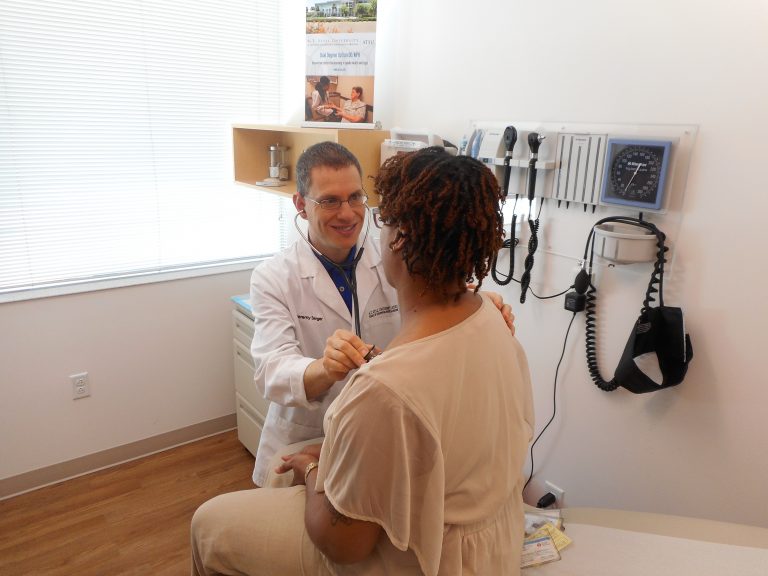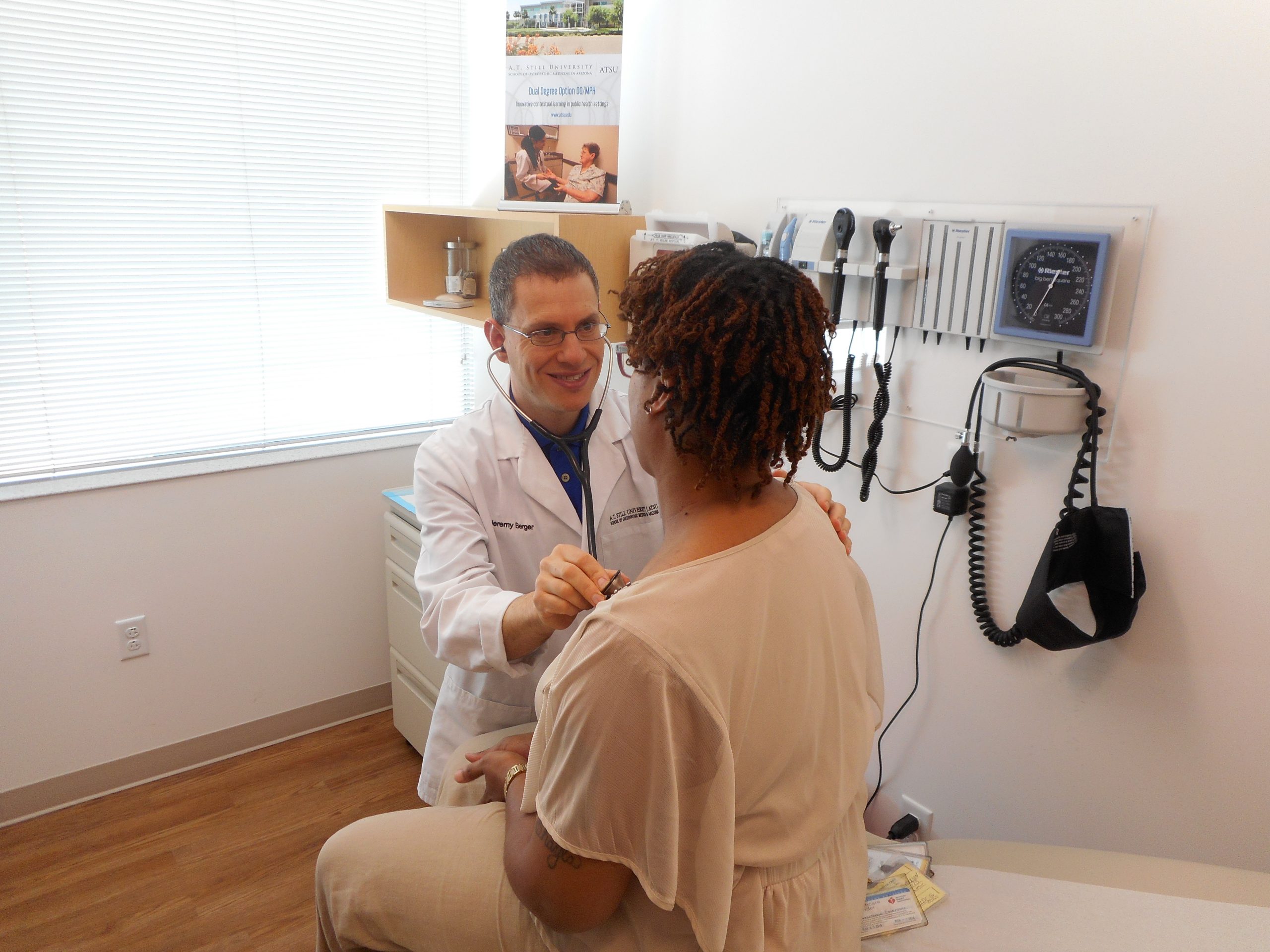School of life
Posted: March 15, 2016
While embedded in a teaching health center, Jeremy Berger, OMS IV, SOMA, rediscovered the importance of patient advocacy.
Ten years ago, when I was a caregiver for my ailing grandfather, I realized patients often need advocates.
They need someone – whether a healthcare professional, a family member, or a friend – who is willing to speak up for them and help guide them through a Byzantine healthcare system. My grandfather suffered from dementia and had trouble understanding when, where, and how to get care. I was able to help him understand these things. Now in my fourth year of medical school, working in a teaching health center has taught me much more about the importance of patient advocacy.
Teaching health centers are great places for student physicians to learn. We learn how to work with diverse populations. We develop a greater awareness of the challenges underserved patients face, such as limited access to transportation and healthful foods. We also get firsthand knowledge of the quirks of local health systems, which helps us better guide patients to hospitals and specialists. In other words, teaching health centers teach us to be better advocates for our patients.
During my second year of medical school, I spent eight hours a week working with patients at Unity Health Care’s East of the River Health Center in Washington, D.C. A few patients in particular – one who even reminded me of my grandfather – helped me learn effective advocacy skills.
The passionate activist
During the fall semester, I worked with a politically active 62-year-old patient who frequently protests in front of the White House. He is homeless and has to make choices I can’t imagine having to make, such as whether to spend $10 on a flu shot or a hot meal. For years, our clinic physicians would greet him from the homeless outreach van and encourage him to visit our clinic. He always refused, until one day he couldn’t take the pain in his belly anymore. When he finally came to another Unity Health Care clinic, where I was rotating that day, we learned he has colon cancer.
This patient made me think of my grandfather. He was confused by the healthcare system and frightened he would lose his independence. When I was a caregiver and advocate for my grandfather, the physicians I found most helpful were those who offered a clear explanation as well as their personal perspective – what they’d do if my grandfather were their relative. So I tried to do this for my patient. My preceptor and I told him that he needed surgery and that we could help him get it. We also said he could forgo treatment and let nature take its course. We told him the decision was his to make.
Thankfully, he chose treatment. This was my first opportunity to trace a patient’s path through our local social and health systems. First, our social worker found him a place to live at the men’s shelter next door to the clinic. Then, we arranged his medical care, which included a colon resection. He is set to begin chemotherapy at the hospital. Afterward, he can receive care at Christ House, a 24-hour residential medical facility for homeless men and women. Once he recovers, he will be able to enroll at Kairos House, a residential facility open to former Christ House patients for their continuous care.
I wondered how anybody could navigate this system without a patient advocate. It was tricky enough for me to learn. But instead of handing my patient off to a series of institutions he was wholly unfamiliar with, I helped guide him through this labyrinth. My experience with this patient has already improved my confidence in working with homeless patients, and I’ve been able to refer them to hospitals and specialists more easily.
The struggling mom
“Doctor, can you help me?” the patient said. “I’m a mother of three. I’m only 36 years old, and I can’t get out of bed.”
When I asked why, she looked embarrassed. She leaned forward to speak. I could tell she was having a hard time telling me what was going on.
She had an exasperated, desperate look on her face. I recognized this expression – I see it daily on the faces of my patients who are losing hope.
“My daughter beats me,” she whispered.
When we think of battered women, the abuser is usually the boyfriend or husband. She said she had already called Child Protective Services to no avail. I am glad she trusted our team enough to share her story. My preceptor and I addressed her medical complaints, many of which seemed to be driven by her depression and anxiety, and we referred her to our clinic’s social worker.
As I rode the Metro home later, I thought about which other public agency could help her. At home, I researched the topic online but could not discern which agency is responsible for protecting a parent.
The next morning, I called Child Protective Services, hoping for some guidance. An employee told me I should instead call Adult Protective Services. After some back and forth with that agency, I eventually learned Adult Protective Services has no protocol for addressing violence against a parent. Our social worker ended up helping arrange for the patient’s daughter to move outside the home temporarily.
When even an aspiring physician has trouble figuring out where to go for help, it’s clear our community healthcare safety net is too complex.
I want to help these kinds of patients – those who are economically vulnerable, who don’t know where to turn. Working in the clinic has given me the kind of firsthand insights that will help me. In community health, my job as a physician will be not only to guide patients back to health, but also to help guide them through the healthcare system. With my grandfather, I learned the importance of a patient advocate. In the past two years at the teaching health center, I learned to be a good patient advocate.
